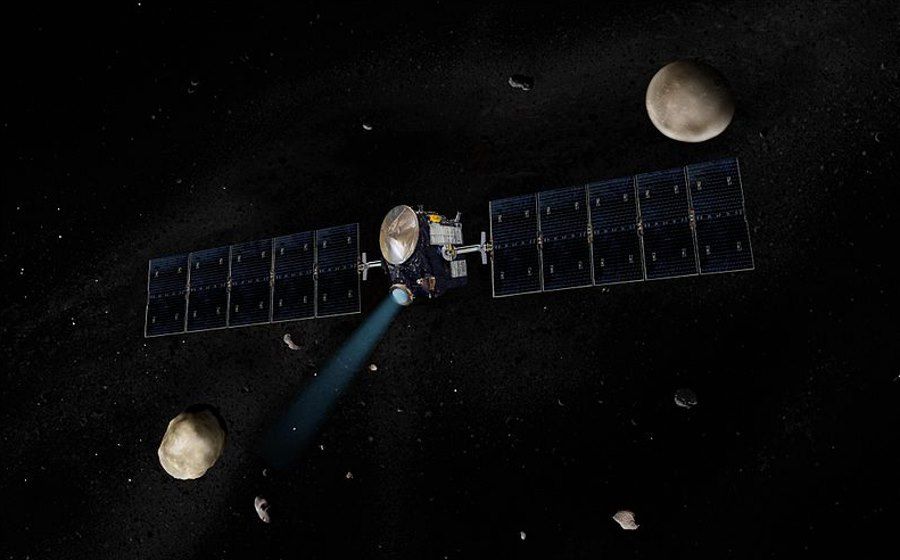Dawn has exhausted its fuel supply. The mission to the asteroid belt has come to an end
A few days after the news of the end of the Kepler Space Telescope mission, another NASA mission has come to an end. The exploration of the asteroid belt was finished by the Dawn probe, which, like the Kepler telescope, also ran out of fuel.
The Dawn probe has fallen silent for good, ending a mission that did not contact the Deep Space Network on The researchers studied objects that remember the earliest chapters of the Solar System’s history. The probe did not report on the previously planned connections. On 31 October and 1 November, it failed to contact the Deep Space Network. NASA specialists declared it inoperable and ended its historic mission.
– We are celebrating the completion of the Dawn mission, its amazing technical achievements and scientific discoveries, which that gave us. The amazing images and data collected by the probe, most notably from the asteroid Vesta and the dwarf planet Ceres, are crucial to understanding the history and evolution of our Solar System – said Thomas Zurbuchen, deputy chief of science missions at NASA.
The Dawn probe has run out of fuel, which hich allowed for proper orientation in space. The spacecraft is no longer able to point its antennas toward Earth or turn its solar panels toward the Sun to recharge its batteries. However, NASA scientists had to be 100 percent. They are sure that the lack of contact was not caused by other factors, so before giving the official information about the end of the mission, they first had to rule out possible other reasons.
The Dawn probe was launched in 2007. Head The primary goal of the mission was to study two ch largest objects in the belt of asteroids between Mars and Jupiter. The asteroid West and the dwarf planet Ceres. The task of the probe was to determine the shape , size in, the mass and composition of the . It had r and determine the size of their nuclei. In the course of its journey It has traveled nearly seven billion miles in a kilometer .
These objects are so-called proto-planets, objects from the early history of the solar system, from the time hen worlds similar to our planet Earth were created. The data provided by the probe will give the researchers years of work. Together, they comprise the history of our cosmic environment.
The Dawn probe approached Vesta in 2011 and became the first spacecraft to study an object in the asteroid belt. Four years p It later reached the orbit of Ceres, becoming the first probe to orbit a dwarf planet The probe has entered the orbits of the dw of celestial bodies. R Dawn was also the first to study a dwarf planet.
Since then, the probe has sent back a mass of valuable information about these two and planet-like worlds , which and they’ve evolved in a very r in an in-depth manner b. Data collected by Dawn showed the importance of location in the formation of celestial bodies. They also reinforced the idea that dwarf planets could host oceans for much of their history, and potentially still do today.
Dawn probe finds organic compounds on Ceres. It has discovered a methane-, amino-, and hydrocarbon-rich region on p The northern p The probe will orbit a dwarf planet near Eruntet Crater. This area has about 1,000 kilometers in a square. Early on, it found salts and ammonia. Read more in this article: Organic compounds detected on the surface of Ceres.
– The demands on Dawn were enormous, but it met the challenge every time. It’s hard to say goodbye to this amazing spacecraft, but its time has come, said mission director and chief NASA Jet Propulsion Laboratory engineer Marc Rayman.
– In many ways, Dawn’s legacy is just beginning. The data sets from Dawn will be analyzed in depth by scientists in working on how they form and r This is what determines, of course, along with other important factors, our ability and chances of recovery. Ceres and Vesta are r Also important for studying distant systems in planetary science, because they provide insight into the conditions that hich may exist in the wok young stars – explained Carol Raymond, the mission’s principal investigator.
The probe came to rest on the orbit of Ceres, where it will orbit for decades to come.
